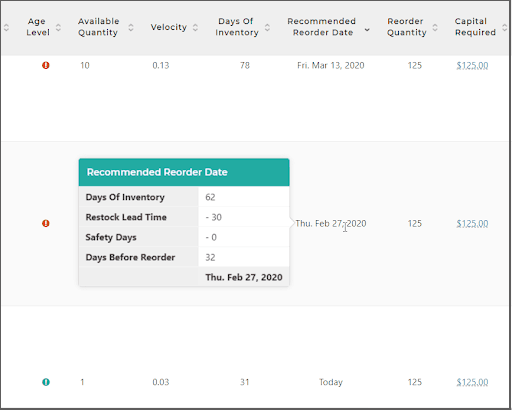
How to Effectively Manage Your Amazon FBA Inventory with SellerLegend
Accurate and proactive inventory management is key to becoming a successful Amazon seller.
The same can be said for a general business person: you must remain proactive at all times in this area of your business. But with Amazon FBA, your ability to stay on top of inventory and restocking can make or break your business success.
Managing your FBA inventory is tricky. When you factor in Amazon storage, your goal of never running out of stock becomes more complex than merely keeping the inventory coming smoothly. That’s because Amazon doesn’t just charge the same storage fee for the same products in their warehouse (or Fulfillment Center). The storage fee actually depends on the duration of time that the same product stays in the warehouse. The longer your products sit on Amazon’s shelves, the more they charge you for storage. This is their way of penalizing the seller for not selling units quickly enough and for holding up space. On the flip side, you don’t want to be always running out of inventory as this negatively impacts your Amazon sales ranking.
Efficient Amazon FBA Inventory Management
While there are plenty of ways to increase your sales so you can move inventory, another smart thing you can do is manage your stock such that it never remains in the Amazon Fulfillment Center for longer than necessary while ensuring that you always have enough units to fulfill incoming orders. This way, your stock doesn’t incur storage fees large enough to hurt your profitability. This idea is actually similar to the JIT or Just In Time inventory strategy pioneered by the Japanese car manufacturer Toyota to reduce inventory costs and decrease wastage. To do this, you need to be able to accurately forecast your inventory needs based on your sales volume and other supply chain factors.
You can do this manually using spreadsheets, or use an Amazon seller tool that will make your life easier. This is where SellerLegend comes in.
With SellerLegend, you can see how fast you are selling each of your products. Based on that figure, as well as factors such as the time it takes to get your stock shipped into FBA fulfillment centers and the time period for which you’d like to remain in stock, you can get three crucial pieces of information regarding re-stocking; namely, restock date, restock quantity, and capital required.
You can see Restock Date and Quantity on the Inventory screen, as well as inside the Upcoming Restocks widget on the main dashboard. With that widget up and front for you to see, you will always remain in check with all the restocks coming in.
On the inventory screen, you will find these columns, and hovering over any of the values under them will show you a breakdown of how those values are being calculated:

How does SellerLegend calculate your inventory?
An important concept that SellerLegend uses for inventory management and forecasting, is called velocity. Velocity tells you how many units are sold per day, on average, over a selected time period. With 15 units sold in 30 days, the velocity will come out to 0.5. That is, 0.5 products were sold per day in 30 days.
For Recommended Reorder Date, SellerLegend takes into account Days of Inventory, Restock Lead Time, and Safety Days. Days of Inventory tells you how many days the current inventory will last at the sales velocity as is selected by the user. Restock Lead Time is the number of days it takes for a shipment to reach the fulfillment center and is set by the user. Safety Days are also set by the user, as any additional number of days that may be required for the stock to arrive.
For Reorder Quantity, SellerLegend uses a number set by the user called Days of Cover. Days of Cover is the number of days that you want the product to be in stock for. Multiplying it with the sales velocity gives us the number of units to order so they last that many days.
Easily Manage Your FBA Inventory with SellerLegend
SellerLegend’s inventory tracking and forecasting system is highly customizable. Once you have set it all up according to the needs of your business, you will find that managing your Amazon FBA inventory has become a lot easier and convenient. You will remain up to date on how many units to order, for every individual product, and when. This will make sure you never go out of stock, yet still don’t incur any extra charges.